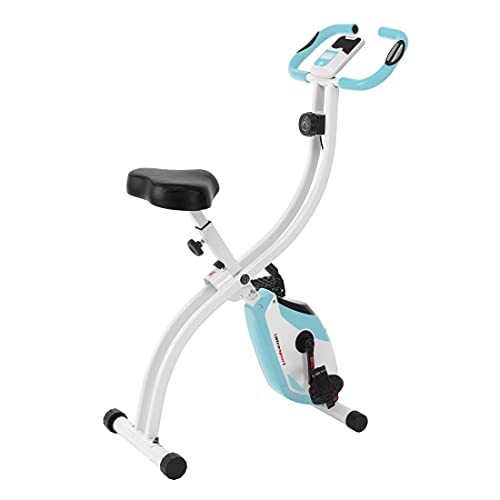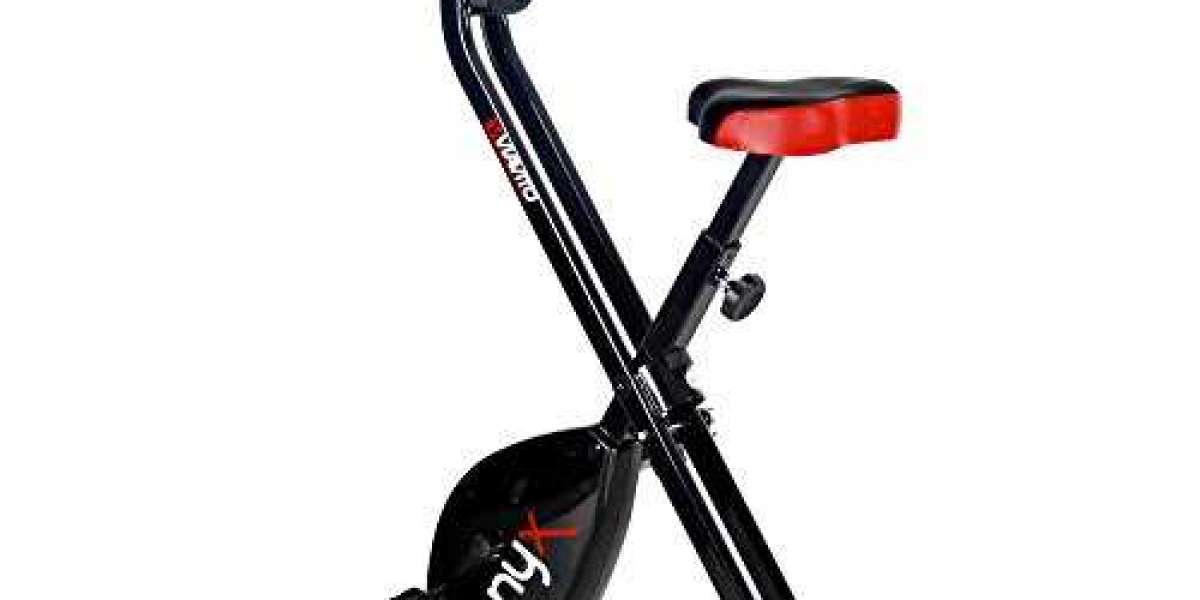In the bustling world of fitness, where trends come and go, the exercise bike remains a steadfast and versatile tool for maintaining and improving health. Whether you're a seasoned athlete or a fitness novice, an exercise bike can be a valuable addition to your workout routine. This comprehensive guide will explore everything you need to know about exercise bikes, from their types and benefits to tips for choosing the right one and frequently asked questions.
What is an Exercise Bike?
An exercise bike, also known as a stationary bike, is a piece of exercise equipment designed to mimic the action of riding a bicycle. It allows you to pedal in a fixed location, providing a low-impact cardiovascular workout. Exercise bikes come in various forms, each tailored to different fitness goals and preferences.

Types of Exercise Bikes
Upright Bikes
- Description: These bikes resemble traditional bicycles, with a more vertical riding position.
- Best For: General fitness, weight loss, and low-impact cardio workouts.
- Features: Adjustable seats, handlebars, and resistance levels to suit different users.
Recumbent Bikes
- Description: Recumbent bikes have a reclined riding position, with a backrest and a more comfortable seat.
- Best For: Individuals with back pain, joint issues, or those who prefer a more relaxed workout.
- Features: Ergonomic design, low-impact exercise, and often come with built-in programs and monitors.
Spin Bikes (Indoor Cycling Bikes)
- Description: Spin bikes are designed for high-intensity indoor cycling classes and can mimic the experience of riding on hilly terrain.
- Best For: Cyclists, HIIT (High-Intensity Interval Training) enthusiasts, and those looking for a challenging workout.
- Features: Heavy flywheels for realistic road feel, adjustable resistance, and often compatible with additional accessories like heart rate monitors.
Dual Action Bikes
- Description: These bikes incorporate both upper and lower body workouts, with moving handlebars that work the arms.
- Best For: Full-body workouts and those looking to burn more calories in less time.
- Features: Upper body resistance, adjustable seat and handlebars, and often come with digital displays.
Interactive Bikes
- Description: Interactive bikes are connected to digital platforms, offering virtual classes, races, and training programs.
- Best For: Tech-savvy individuals who enjoy a variety of workout experiences and community interaction.
- Features: Wi-Fi connectivity, large screens, and integration with fitness apps and platforms.
Benefits of Using an Exercise Bike
Low-Impact Exercise
- Exercise bikes provide a low-impact alternative to running or other high-impact activities, making them ideal for individuals with joint problems or recovering from injuries.
Cardiovascular Health
- Regular use of an exercise bike can improve heart health, increase endurance, and lower the risk of cardiovascular diseases.
Weight Management
- Cycling is an excellent way to burn calories and lose weight, especially when combined with a balanced diet and other forms of exercise.
Muscle Toning
- Exercise bikes can help tone and strengthen the leg muscles, including the quadriceps, hamstrings, and calves. Dual action bikes also target the upper body.
Convenience
- You can use an exercise bike at home, eliminating the need for gym memberships and allowing you to work out at your convenience.
Variety of Workouts
- Many exercise bikes come with built-in programs and the ability to adjust resistance, providing a wide range of workout options.
Mental Health

- Regular exercise, including cycling, can help reduce stress, anxiety, and depression, while also improving overall mood and cognitive function.
Factors to Consider When Choosing an Exercise Bike
Fitness Goals
- Determine whether you need a bike for general fitness, weight loss, recovery, or high-intensity training.
Space Availability
- Measure the space where you plan to place the bike and choose one that fits comfortably.
Budget
- Exercise bikes range from budget-friendly to high-end models. Set a budget and look for features that align with your needs.
Comfort
- Test the bike if possible, or read reviews to ensure the seat and handlebars are comfortable for extended use.
Resistance Type
- Consider the type of resistance (magnetic, friction, or air) that best suits your workout style and preferences.
Tech Features
- If you enjoy tracking your progress or participating in virtual classes, look for bikes with built-in monitors, Wi-Fi connectivity, and app integration.
Durability
- Invest in a bike made from high-quality materials to ensure it lasts and can handle your workout intensity.
Tips for Using an Exercise Bike
Proper Setup
- Adjust the seat and handlebars to a comfortable height and position. Your feet should be flat on the pedals, and your knees should have a slight bend when fully extended.
Warm-Up and Cool-Down
- Always start with a 5-10 minute warm-up at a low resistance level and end with a cool-down to prevent muscle strain and soreness.
Consistency
- Aim to use the bike regularly, ideally 3-5 times a week, to see the best results.
Vary Your Workouts
- Mix up your routines with different resistance levels, interval training, and virtual classes to avoid plateaus and keep your motivation high.
Stay Hydrated
- Keep a water bottle nearby to stay hydrated during your workouts.
Listen to Your Body
- If you experience pain or discomfort, stop the workout and adjust your position or intensity.
Frequently Asked Questions (FAQs)
Q: Are exercise bikes suitable for older adults?
- A: Exercisebikesonline.Uk Yes, exercise bikes are excellent for older adults due to their low-impact nature and ability to provide a gentle cardiovascular workout. Recumbent bikes are particularly recommended for those with back or joint issues.
Q: Can you lose weight using an exercise bike?
- A: Absolutely. Regular cycling can help burn calories and contribute to weight loss, especially when combined with a healthy diet and other physical activities.
Q: How often should I use an exercise bike?
- A: For optimal results, aim to use the bike 3-5 times a week. However, even a few sessions a week can be beneficial.
Q: What is the best type of exercise bike for beginners?
- A: Upright bikes are generally the best for beginners due to their simplicity and ease of use. They also offer a good range of resistance levels to help you gradually build strength and endurance.
Q: Can you train for outdoor cycling on an exercise bike?
- A: Yes, you can train for outdoor cycling on an exercise bike. Spin bikes, in particular, are designed to mimic the experience of riding on hilly terrain, making them ideal for this purpose.
Q: How do I choose the right resistance level?
- A: Start with a low resistance level and gradually increase as you build strength. The right level should allow you to maintain a steady pace without feeling overly strained.
Q: Are interactive bikes worth the investment?
- A: Interactive bikes can be a great investment if you enjoy the variety and motivation that comes from virtual classes and community features. They can also help you stay consistent with your workouts.
Conclusion
Exercise bikes are a versatile and effective tool for enhancing your fitness journey, whether you're looking to improve cardiovascular health, manage your weight, or simply stay active at home. By understanding the different types of bikes, their benefits, and how to choose and use one effectively, you can find the perfect fit for your lifestyle and fitness goals. Happy cycling!
Additional Resources
- Fitness Apps and Platforms: Explore apps like Peloton, Zwift, and MyFitnessPal for additional workout guidance and tracking.
- Physical Therapists: Consult with a physical therapist if you have specific health concerns or injuries.
- Local Fitness Stores: Visit local stores to test different models and get expert advice.





